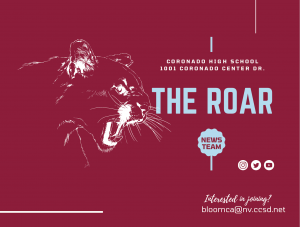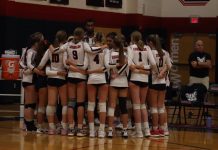By Jolie Ross

Photo courtesy of Lori Jo Ross
When athletes assess their injuries after a long and brutal season, it’s not uncommon to discover bruises, blisters, and scrapes. Sometimes though, the injuries are so severe they can ruin a player’s season and put the athlete’s future plans at risk.
The most common sports injuries are sprains and strains, knee injuries, swollen muscles, Achilles tendon injuries, pain along the shin bone, rotator cuff injuries, fractures, and dislocations. Physical therapists help athletes to get back into the game and strengthen their area that has been injured. Most injuries occur if a player doesn’t stretch themselves out properly.
Varsity soccer player, Michaela Morris, knows the feeling of having a brutal injury. On a breakaway ball, Morris tapped the ball past the goalie and as the goalie dove, she ran into Michaela’s right knee, tearing her medial collateral ligament (MCL). Morris was out for two months and wasn’t able to finish the high school season. Morris came back after her recovery and remained a part of the soccer program both at school and with her club team. Michaela Morris is signed to attend UNLV on a soccer scholarship and is one of the top scorers in Nevada.
“It’s difficult to run sometimes because of my brace. It’s uncomfortable to run, it would be a lot easier if I didn’t have it,” Michaela Morris, junior, said.
Danielle Amato, varsity softball play, tore muscles in her rotator cuff that were so small it was difficult to determine the injury. It was discovered that when Amato would quickly transition from an underhand motion to an overhand motion she was tearing the muscle. Amato was out for two months and had to undergo two surgeries and physical therapy. Amato is back playing for the school’s team and is committed to Kutztown in Pennsylvania.
“The hardest thing about my injury was that it was so microscopic that it didn’t show up on the MRI’s, but it caused so much pain it was basically a guessing game for my doctor,” Amato, senior, said.
Twisting his anterior cruciate ligament (ACL) his junior year during practice, Charlie Brezenski, was out for six months and had to undergo surgery and intensive physical therapy. Because of his injury, he had to miss out on his entire junior year of football, but came back his senior year and played wide receiver. He believes that his injury slowed him down because his leg didn’t seem strong enough.
“I didn’t work hard enough in the summer, so my injury makes me struggle sometimes,” Brzezinski said.
After being taken down by the other team’s defender, Kassaundra Eason had to choose between resting and waiting for her torn ligament to heal on its own or undergoing surgery and getting back in the game quickly. Eason chose the surgery and was back to playing after three months of recovery.
“Now when I play my injury doesn’t affect me physically but more mentally, and it has made me more cautious of my actions on the field,” Eason, junior, said.
Injuries are one of an athlete’s worst nightmares, especially during the season. At any moment an athlete’s career can be ruined or put on hold by one false movement.











